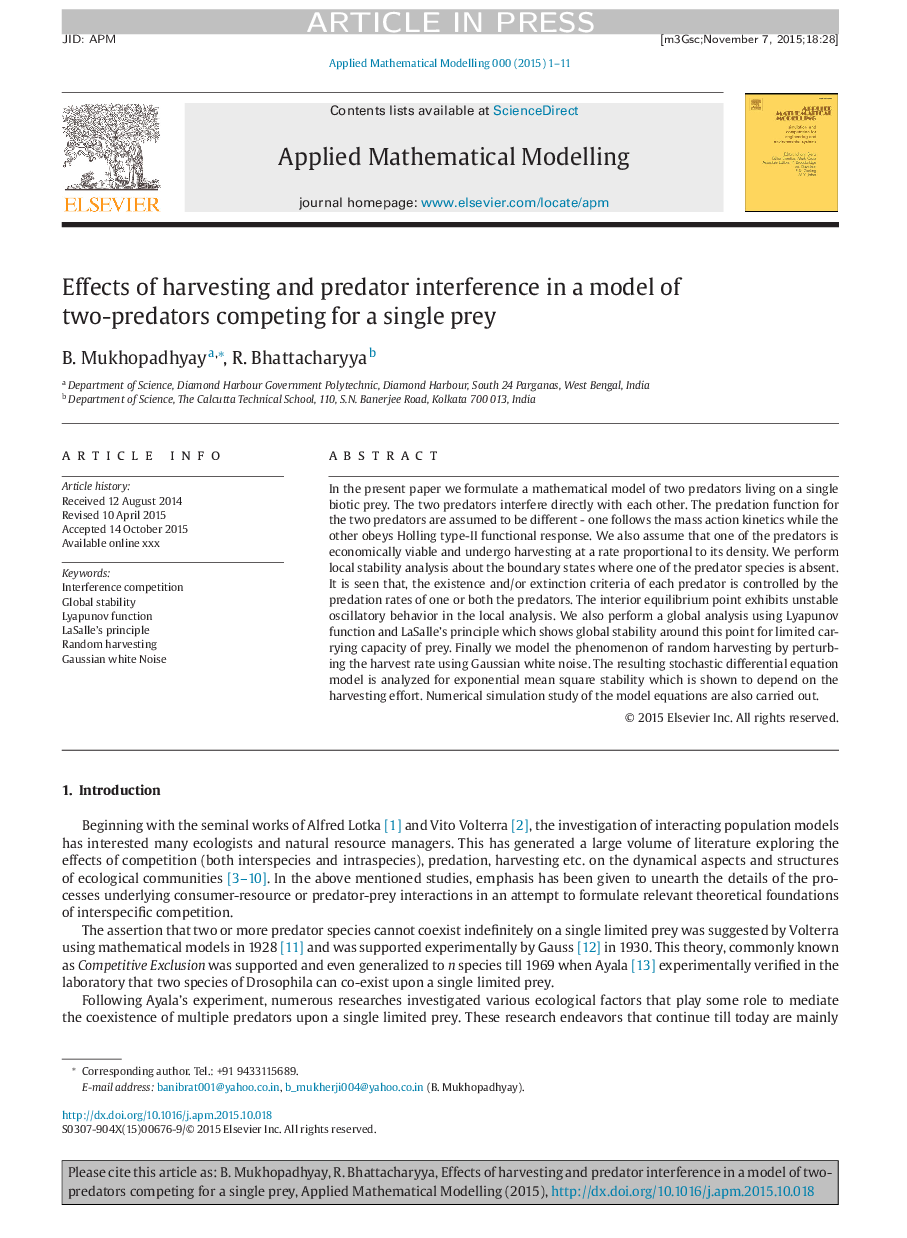| Article ID | Journal | Published Year | Pages | File Type |
|---|---|---|---|---|
| 10677562 | Applied Mathematical Modelling | 2016 | 11 Pages |
Abstract
In the present paper we formulate a mathematical model of two predators living on a single biotic prey. The two predators interfere directly with each other. The predation function for the two predators are assumed to be different - one follows the mass action kinetics while the other obeys Holling type-II functional response. We also assume that one of the predators is economically viable and undergo harvesting at a rate proportional to its density. We perform local stability analysis about the boundary states where one of the predator species is absent. It is seen that, the existence and/or extinction criteria of each predator is controlled by the predation rates of one or both the predators. The interior equilibrium point exhibits unstable oscillatory behavior in the local analysis. We also perform a global analysis using Lyapunov function and LaSalle's principle which shows global stability around this point for limited carrying capacity of prey. Finally we model the phenomenon of random harvesting by perturbing the harvest rate using Gaussian white noise. The resulting stochastic differential equation model is analyzed for exponential mean square stability which is shown to depend on the harvesting effort. Numerical simulation study of the model equations are also carried out.
Related Topics
Physical Sciences and Engineering
Engineering
Computational Mechanics
Authors
B. Mukhopadhyay, R. Bhattacharyya,
